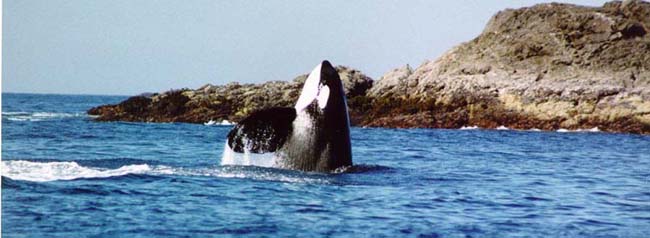
ALL THERE IS TO KNOW ABOUT WHALES
by Dee Finney
updated 9-24-13


|
Warning on whales' bleak future Six cetacean species are critically endangered Pro-whaling countries and chemical pollution are creating an increasingly bleak outlook for whales, according to campaigners. The warning comes as delegates prepare for the annual International Whaling Commission meeting, starting on Monday. The Environmental Investigation Agency wants to make pollution a priority at the meeting in Sorrento, Italy. But there are fears pro-whaling members who threaten to create a separate alliance will dominate debate. A report by the agency highlights how susceptible whales, dolphins and porpoises are to toxic chemical pollutants. It also warns there are health risks to people who eat them. "The threat of chemical pollutants to cetaceans is real," said the agency's Clare Perry. Mercury levels "Combined with an increase in the number of pro-whaling countries joining the IWC, the outlook for whales looks increasingly bleak. "All IWC member countries, whether they support commercial whaling or not, should consider the significance of environmental threats to whales, dolphins and porpoises." Mercury, brominated flame retardants, polychlorinated biphenyls and other pesticides are among the toxic chemicals thought to cause disorders including reproductive failure, developmental problems and cancer. The agency says mercury levels in canned whale stew in Japan are three times above permitted levels and exposure to the chemicals causes neurological damage. WHALING SINCE THE BAN The number of whales killed by Japan, Norway and Iceland since the IWC moratorium took effect in 1986 is 25,239 Most whales are killed with harpoons designed to explode inside them, though small traditional coastal communities use other methods Opponents say the average estimated time to death is more than two minutes, with some whales taking over an hour to die. The IWC has grown from 14 member states to 55 since it was set up in 1946 both to conserve whales and to develop the whaling industry. It imposed a moratorium on commercial whaling, in effect since 1986, to let whales recover from centuries of industrial whaling which had left some species near extinction. Since then Japan, Norway and Iceland have killed 25,239 whales. Six cetacean species are critically endangered and at least one, the Yangtze River Basin Dolphin, is in immediate danger of becoming the first cetacean species whose extinction was caused by humans. The warnings come as Japan has drawn up plans to replace the International Whaling Commission with a new pro-whaling alliance. The IWC remains deadlocked between the countries opposed to a resumption of commercial whaling and those, led by Japan, which say it should go ahead. Members of Japan's ruling party now say they are prepared to go it alone and describe the IWC as "totally dysfunctional". Whalewatch, a coalition of 140 organisations, is lobbying the IWC to call a halt to all commercial and scientific whaling on welfare grounds. Naturalist and broadcaster Sir David Attenborough supports the campaign. WANT TO GO ON A WHALE TOUR? CHECK THIS SITE OUT. |
|||||||
|
URGENT!!!! PLEASE READ!!! Top-rating survivor: the human tribe has spoken
Dear Dolores In the spring of 1998 I was living on the magical Big Island of Hawai'i. For several nights in a row I was having a dream about a humpback whale that was swimming with me eye to eye. In these unusually lucid dreams the whale continued to share with me her unconditional openness, peace and wisdom. It changed me profoundly and inspired a new relationship with these wise beings. One day I was out for a run and came to the bay near where I was living. Often there are dolphins in the bay and many of us would be down there shortly after dawn to slip into the water and go swimming with our dolphin friends. That day I was given a special greeting as a humpback whale and her calf were breaching repeatedly. Another day I was out on the ocean with
friends and a whale did two swan dives right in front of us when we were
swimming and deep inside I knew that the show was for me and the
work I was about to do. |
|||||||
![]()
This page was prompted by a dream on 3-13-99: I was working on a computer, looking up words and going to the center of the page, making a square picture by having the same word pattern in all four directions. It was quite fun. One of my kids saw me do that and said,"Do the word 'whale', then the word aquarium." So I did. Then one of my kids asked if I would speak to his class about whales. I said, "Sure!" Big deal! Big whales! So, came the day to go to school and talk about the whales. We went to his classroom and went inside, using a special knock. The teacher let us in and said,"Oh! You didn't know we were having a special auditorium to hear you speak about your experiences with whales?" I gulped a little! The teacher said, "What kind of whales do you work with?" I gulped again and finally said, " Small ones!" The teacher wanted to know, "What kind is it?" I gulped again and said, "Oh! It was cute! It was the size of a bathtub!" The teacher looked puzzled, but had to do something before I went to speak to the students, so I got off her hook...so-to-speak. I excused myself for a moment and left the room. I went out into the hall and asked a student, "Where's the school library?" He pointed "Up!" and I ran as fast as I could up the stairs to find the school library. I had to find a book on whales. I didn't even know the names of different kinds of whales. I was totally unprepared to do this. The teacher was asking questions, not just sitting passively and listening to what I would have to say. I needed to know more about the subject. I found the school library and saw that the books were alphabetized. I was at the 'Z' end, close to where I wanted to be, but then I saw that these were fiction books, alphabetized by author. I needed a book on whales...the real facts. So, someone pointed in another direction and I went over to where the 'W' section was to find a non-fiction book on whales. I figured I could take a quick look at the book, hold it in one hand for a prop and wave my other hand around for emphasis and nobody would know I didn't know anything about whales. I got to the 'W' section and there was a big gap where 'whales' should be. Either a kid or the teacher had taken the book or books about whales. The whales were gone and these kids would never know what a whale was. Now I really in a panic. I didn't want anyone to know I had been only bluffing and I didn't know anything about whales, so I had to find an excuse that I didn't have to speak at all. I considered feigning sickness so I could leave. I thought about pretending there was a fire and pulling the fire alarm. I knew that was bad. I didn't know what to do. I spotted a computer and went to it to look up the word 'whale'. All I knew was how to make patterns with words, I didn't know what a whale really was. |
DREAM OF WHALES
|

Roderick, First Grade
M
V Leckie Elementary School
Washington, District of Columbia
![]()
Mysticeti: From the Greek word Mystax meaning "moustache" and Ketos meaning "whale".
Baleen whales have two nostrils, or blowholes, and moustache-like baleen plates in their mouths with which they strain food from sea water. The Blue whale is the largest animal that has ever lived. There are 10 living species of Baleen whales.
There are 40 different types of whales and numerous species within each.
![]()
| The notion that cetaceans have any sort of culture,
popular or otherwise, is hotly disputed by some. Most social scientists
stubbornly resist the idea that animals, even the great apes, have
culture. After all, isn't it our languages and folklore, religion, music
and all those other sophisticated strands of human culture that set us
apart from the beasts? Clearly, whales and dolphins don't have art or
literature; they have no architecture, agriculture or fancy cuisine. But
patient observation over many years has begun to reveal behaviours that can only have been learned from other whales. And that, say whale biologists, constitutes culture. "I used to use the C-word with some trepidation," says John
Ford of the Vancouver Aquarium Marine Science Centre. But in recent years,
he and other whale biologists have become emboldened by what they've
found. Hal Whitehead and his colleague Luke Rendell, from Dalhousie
University in Halifax, Nova Scotia, have identified 17 types of behaviour
by whales and dolphins which they say are aspects of culture. And this is
just the start. "My impression is that there is a reasonable chance
that a substantial proportion of whale behaviour is Few people doubt that captive bottlenose dolphins are adept at imitation. They can reproduce complex patterns of tones produced by human experimenters and can even mimic the body movements of sea lions that share their pool. There is also evidence that captive killer whales can mimic the calls of their tank mates. For biologists who want to learn about the cultural lives of any cetacean in its natural habitat, experiments are out of the question. They must rely on deduction. If members of a group share behaviours that are not the result of genetic inheritance or environmental variation, then they have almost certainly learned them by watching, following or listening to other animals. So far, humpback and killer whales provide the best evidence of culture in cetaceans and the song of the male humpback is among the most striking examples. Humpback populations in different oceans sing distinctly different songs, but within the same ocean they all stick to much the same score. If that were all there was to it, then the song could be inherited, the males of each population programmed to sing the same song. But the song changes during the breeding season. One male might add an extra set of groans; another might drop a series
of grunts. Soon all the other males have altered their own rendition to
incorporate the changes until they are once again all singing the same
song. The change is obviously not the result of a genetic mutation, nor
can it be a response to some factor in the animals' environment-thousands
of whales spread across a vast part Culture plays an even bigger part in the life of killer whales. Nowhere
is this more obvious than along the north-west coast of America where
killer whales are split into two distinct
populations-"residents" and "transients". They live in
the same stretch of water, but they don't mingle. Their social structure
and lifestyles are very different. They eat from a different menu and have
devised their own Residents live in stable pods made up of two or three mothers and their
offspring-perhaps 20 whales in all. Calves stay with their mothers for
life, and in more than 20 years of observation no one has ever seen a
whale switch pods. Transients travel in smaller, more changeable groups of
between three and six. To qualify as a part of killer whale culture, dialects must be learned
from other members of the pod. Animals with different dialects share the
same waters, so the variation can't be a product of the physical
environment. "And we can toss out the notion that dialects are
inherited," says Lance Barrett-Lennard of the University of British
Columbia. He has spent the past seven years analysing DNA from 270 whales.
His paternity tests reveal that female killer whales invariably |
| Killer Whale Order Cetacea : Family Delphinidae : Orcinus orca (Linnaeus)
Distribution in Texas. Killer whales are distributed worldwide, including polar seas. They are rare in the Gulf of Mexico. Known in Texas on the basis of one stranding on South Padre Island and one sighting in waters off of Port Aransas. Habits. Killer whales are most often observed as gentle giants of marine aquariums but they are, in fact, the supreme carnivore of the world’s oceans. At sea they are usually seen in "pods" of 5-20, although up to 150 have been seen together at one time. Large groups probably consist of several pods which have temporarily aggregated. Pods themselves appear very stable for many years, with little emigration or immigration. They are highly cooperative and the group functions as a unit when hunting, making these delphinids extremely efficient predators. Groups usually contain adults of both sexes but sometimes females with young will form their own groups. Food items include squid, fish, skates, rays, sharks, sea turtles, sea birds, seals, sea lions, walrus, dolphins, porpoises, and large whales such as fin whales, humpback whales, right whales, minke whales, and gray whales. They are even known to attack the sperm whale and blue whale. On the Atlantic coast of South America, as well as on islands of the Indian Ocean, killer whales have been observed lunging through the surf — and coming right onto the beach — in pursuit of elephant seals and sea lions. After such an attack the whales have to wriggle and slide back into depths adequate for swimming. In captivity, killer whales eat about 45 kg of food per day but free ranging animals probably require much more. Although these are obviously proficient and voracious hunters, killer whales are not known to have ever attacked a human. The reproductive habits of these whales are poorly known. The males may mate with more than one female and mating may occur throughout the year, although most calves seem to appear in autumn or winter in shallow waters. Their period of gestation is about 12 months. Calves are approximately 2.4 m long at birth and reach sexual maturity when 4.9-6.1 m in length. Illustration credit: Pieter A. Folkens. |
![]()
| Extinction nears for whales and dolphins By Alex Kirby BBC News Online environment correspondent Click source for pictures > http://news.bbc.co.uk/2/hi/science/nature/3024785.stm Some whales, dolphins and porpoises are now so endangered they could
vanish within a decade, scientists say. |
population estimate |
estimate |
|
| blue whale | 160,000 - 240,000 | 9,000 |
| bowhead whale | 52,000-60,000 | 8,200 |
| Bryde's whale | unknown | 66,000-86,000 |
| fin whale | 300,000-650,000 | 123,000 |
| gray whale (eastern Pacific stock) |
15,000-20,000 | 21,000 |
| gray whale (western Pacific stock) |
1,500-10,000 | 100-200 |
| gray whale (Atlantic stock) |
unknown | extinct |
| humpback whale | 150,000 | 25,000 |
| Minke whale | unknown, but tens of thousands were killed during whaling era |
850,000 |
| northern right whale | no estimates, but tens of thousands were killed during whaling era |
870-1,700 in the western Atlantic; very few in the Pacific. |
| sei whale | 100,000 | 55,000 |
| southern right whale | no estimate, but 40,000 were killed between 1785 and 1939 |
1,500 |
| BALEEN | BRYDE'S | |||
| HARBOUR | HUMPBACK | |||
| WHALE SHARK | GENERAL |
![]()
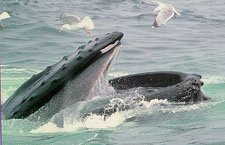
Baleen Whales
- Adaptation the the Aquatic Environment
Baleen Whales -
Characteristics
Baleen Whales
- Communication
Baleen Whales
- Diet and Eating Habits
Baleen
Whales - Seaworld
Baleen Whales
Behavior
Baleen Whales
- Senses
Discovery
World - Baleen
The Feeding of the
Baleen Whales
Toothed and
Baleen Whales
Baleen Whales
Bibliography
![]()
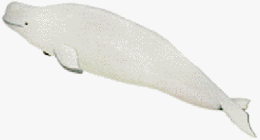
The Beluga
Whale
Family Monodontidae
Genus Delphinapterous
Species leucas ("White whale" or "Beluga Whale")
Also known as "sea canaries" for their sound mimicking capabilities, the
white whales are sometimes found in large groups in northern waters.
Charlotte, The Vermont
Whale. A paleontological find of an 11,000 year old white whale
skeleton.
Delphinapterous
leucas
Beluga Whale Facts
Beluga Whale
Beluga Whale
Beluga
Whale
Beluga
Whale Population and Habitat
Beluga Whale - Social
and Feeding Habits
Charlotte, the Beluga
Whale
Beluga Photo -
Incredible
Beluga - Physical
Characteristics
Beluga Whale
Pod
![]()
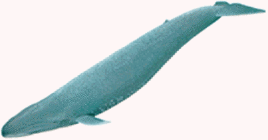
Blue Whale
Blue Whale
The Blue
Whale
Blue Whale
Facts
Blue Whale
- Dictionary
Blue
Whale Film
Save
the Blue Whale
Embattled
Behemoths
Why Antartic Blue Whales
Don't Recover
Species musculus ("Blue Whale")
Balaenoptera
musculus
Balaenoptera musculus
Mit.
Balaenoptera musculus
Mit. 2
Balaenoptera_musculus
Balaenoptera_musculus
Balaenoptera
musculus [Blue whale]
Blue
Whale
Recovery of Blue
whale stocks
![]()
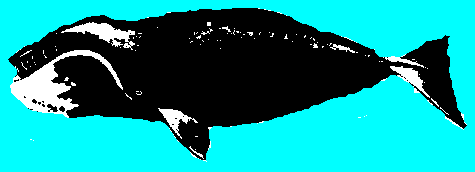
Bowhead
Whale
Bowhead
Whale
Bowhead
Whales
Canada Hunts Worlds
Rarest Whale
Distribution
of Bowhead Whales - Map
Distribution
of Bowhead whales - Map - Summer
Distribution
of Bowhead Whales - Map - Fall
Eastern Arctic Bowhead
Whale
GREENPEACE
ACTIVISTS PARTICIPATE IN THE SLAUGHTER OF AN ENDANGERED BOWHEAD WHALE
The Bowhead Whale,
Balaena mysticetus: Its Historic and Current Status
Inuit defy attempts
to protect endangered whales
Inuvialuit Bowhead Harvest
Sounds
and Source Levels from Bowhead Whales off of Pt.Barrow, AK
Family Balaenidae
Cruising, slow-moving, continuous filter feeders.
Genus Balaena
Species mysticetus ("Bowhead Whale")
Research
on Whale Population Estimation and Population Dynamics: Adrian
Raftery
Balaena
mysticetus
![]()
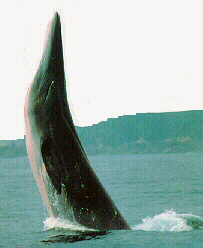
Species edeni ("Bryde's Whale")
Bryde's
Whale
Bryde's
Whale
Bryde's Whale
Discovery
World - Bryde's Whale
Whales -
fossils
Discovering
Whales - Bryde's Whale
![]()
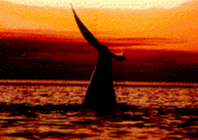
Fin Whale
Discovering Whales
- The Fin Whale
The Fin Whale
Finback Whale Facts
Gander Academy - Fin
Whales
World
of Whales - Fin Whales
Species physalus ("Fin Whale")
Respiration
and Surfacing Rates for Finback Whales (Balaenoptera physalus) Observed From
A Lighthouse Tower.
Balaenoptera
physalus
Balaenoptera physalus
Mit.
Balaenoptera_physalus
Balaenoptera
physalus [Fin whale]
Whales:
The Fin Whale
Discovering Whales
- The Fin Whale
Discovering
Whales - The Fin Whale
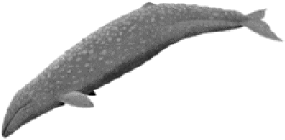
Gray
Whale
The Baleen Gray
Whale
The Gray
Whale
The Gray Whales in British
Columbia
California Gray Whale
Tutorial
Close encounter with a
Gray Whale
by Thomas H. Hogan
Gray whale calf born
at San Diego SeaWorld
Gray Whale
Facts
Gray Whales of the
Pacific
Gray Whale Blowing at Baja,
CA
Gray Whale Breaching at Dana Point,
CA
In the Path of the
Giants
Gray
Whale Watching with Winston
Gray
Whale - Moby Dick
Gray Whale
and Wildlife Introduction
Gray Whale
Gray Whale
Gray Whale
Gray Whale Tutorial
Family Eschrichtidae
Genus Eschrichtius
Species gibbosus ("Gray Whale")
Whales on the
Net - Gray Whale Research
JJ, the orphaned
grey whale. Index of directory.
Baleen
Whales
![]()
HUMPBACK WHALE
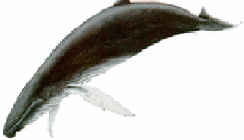
Humpback
Whale
The Humpback
Whale
Humpback Whale
Facts
Movie Clips
of cruising whales (humpbacks?)
Adopt a Humpback
Whale
Humpback Whales
The Humpback Whale Page,
Video tape
Humpback Whale - Underwater Photo
Genus Megaptera
Species novaeangliae ("Humpback whale")
Hawaiian Islands
Humpback Whale National Marine Sanctuary
Whales
Megaptera
Megaptera
novaeangliae
Humpback
Whale- Megaptera
Megaptera
novaeangliae [humpback whale]
Humpback
Whales
![]()
KILLER WHALE
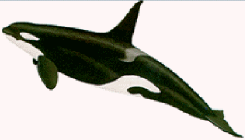
The Killer
Whale
Orcinus Orca
History of the Orca
in British Columbia
Killer Whale Sounds
Killer Whale Adoption
Program,
images and the sound of voices, British Columbia, Canada
Official Keiko Home
Page
Request
to Release Taiji Orcas
Whale Information
- Killer Whales
Killer Whales (Orcinus
orca) at the Vancouver Aquarium
Orca
Orcinus orca
Orcas at
SeaWorld,
San Diego, CA
Robin W. Baird
The Whitehead Whale Research Lab,
Nova Scotia, Canada
Tiu Similä at ANCRU, Lofoten,
Norway
Genus Orcinus
Species orca ("Orca" or "Killer Whale")
British Columbia Killer Whale
Adoption Program. Pictures, sounds, and species information.
Orcas at Sea
World.
Researching Orca
(Ingrid Visser)
Orcinus Orca
Genus Pseudorca
Species crassidens ("False killer Whale")
See: http://www.orlandofuntickets.com/the-sea-life-of-orca-whales.php
![]()
MINKE WHALE
Minke Whale
Facts
Minke
Whale
The Minke
or Piked Whale
Genus Balaenoptera
Species acutorostrata ("Minke Whale")
Discovering
Whales - THe Minke Whale
Balaenoptera
acutorostrata
Balaenoptera
acutorostrata [Minke whale]
Discovering
Whales - The Minke Whale
Minke whale
![]()
Genus Monodon
![]()
PILOT WHALE
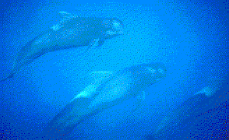
The Pilot
Whale
Genus Globicephala
Species malaena("Pilot Whale")
Species macrorhynchus ("Short-finned Pilot Whale")
Faroese Islands
Pilot Whale Slaughter Information.
RIGHT WHALE
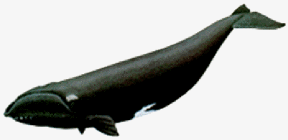
Pygmy Right
Whale
The Right
Whale
Right
Whale
Right whale
Facts
Northern Right
Whale Information
Genus Eubalaena
Called "right whales" because they were the "right" whales for whaling in
the days of sailing vessels. The rorquals could outpace the unassisted sailing
vessels or their oar-powered longboats.
Species glacialis ("Northern Right Whale")
Eubalaena
glacialis
Eubalaena
glacialis [Atlantic right whale]
Northern
Right Whales
Species australis ("Southern Right Whale")
Southern Right Whale Fact
File
Southern
Right Whale bibliographic data
Genus Caperea
Species marginata ("Pygmy Right Whale")
SEI WHALE
Sei
Whale
Species borealis ("Sei Whale")
Balaenoptera
borealis
Balaenoptera_borealis
Balaenoptera
borealis [Sei whale]
![]()
SPERM WHALE
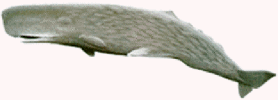
The Sperm
Whale
The Sperm Whale
Sperm
Whales
The Sperm Whale Project
The Pratt Museum
Genus Kogia
Species breviceps ("Pygmy Sperm Whale")
Kogia breviceps
Species simus ("Dwarf Sperm Whale")
Kogia
simus
Family Physeteridae
Genus Physeter
Species macrocephalus ("Sperm Whale")
Sperm
whale. School report on sperm whales, with a nice image linked in.
Physeter
catodon
SCOP:
Protein: Myoglobin from sperm whale
![]()
WHALE SHARK
The Whale
Shark - dictionary
Whale Shark (rhincodon
typus )
![]()
GENERAL LINKS
ANCIENT RITUAL OF THE WHALE HUNT
Nature Photography by Barbara Jordan
INTERSEA FOUNDATION by Cynthia D'Vincent
Nova Scotia Stranding Network, Nova Scotia, Canada.
Dolphin Images by David Hofmann
Whale and a babywhale(330 Kb)
Dolphins of Kewalo Basin, Hawaii
Picture of dolphins in the Red Sea by Johnnie Walker, UK
Pictures Canada, provided by Tobias Murer, Suisse
ACQUIRED INTELLIGENCE WHALE WATCHING SYSTEM
BRITISH COLUMBIA WILD KILLER WHALE ADOPTION PROGRAM
Captain Bill & Sons Deep Sea Fishing & Whale Watching
Coastal Ecosystems Research Foundation - Central Coast Cetacean Project
DAVEY'S LOCKER WHALE WATCHING, NEWPORT BEACH, CA
DISCOVER WHALE WATCHING - LOS ANGELS, CA
DOLPHIN AND WHALE RESOURCE LINKS
ENDANGERED SPECIES OF WHALES IN THE CALIFORNIA AREAGREAT PACIFC WHALE WATCHING ADVENTURES
KON TIKI TOURS - HELSINKI, FINLAND
MONTEREY BAY, CA - WHALE WATCHINGS
NEW ZEALAND VIRTUAL WHALE WATCHING
NOAA FISHERIES - GOVERNMENT WEB SITE
SWIM WITH THE DOLPHINS AND WHALES
THE ONR RIGHT WHALE MONITORING PROJECT
VICTORIA'S WHALE WATCHING PROFESSIONALS
WHALE WATCHINGS - NEW SOUTH WALES
WHALES WITH NAMES AT BAR HARBOR
OTHER MARINE LINKS
Amazing Environmental Organization Web Directory
American Zoo and Aquarium Association
Animal Rights Resource Site (other interesting sites)
Antarctica and its Environment
Atlantic Dolphin Research Cooperative
Brain of the Florida Manatee, The
British Columbia Killer Whale Adoption Program
Brookfield Zoo, Chicago Zoological Society
Center for Coastal Studies....a renowned whale and marine habitat research institution
Centro Interdisciplinare di Bioacustica
Cetacean Society International
Cetecean Telepathic Connection
Channelings/Lightwork/Sirians: The Dolphin
Coastal Ecosystems Research Foundation
Consortium of Aquariums, Universities and Zoos
CONSERVATION AND DEVELOPMENT IN THE GRAY WHALE LAGOONS OF BAJA CALIFORNIA SUR, MEXICO
CTA online ....Curriculum Travel of America, Inc. "Teaching the World"
DOLPHINS. I. BIOLOGY AND NATURAL HISTORY
Bottlenose Dolphins Information Booklet,
Electronic Zoo - Veterinary Resources
Eurosquid Marine Mammal Homepage
Facts About Federal Wildlife Laws
Great Whales Foundation - Educating about whales from the whale's point of view
Humpback Whale Adventure to the Dominican Republic
International Fund for Animal Welfare
International
Marine Mammal Project (Earth Island)
International
Whaling Commission
International Wildlife
Coalition
Interpsecies
Communication Inc.
IUCN
Red List of Threatened Animals (1994)
Johnstone Strait,
British Columbia by Tony Newlin
Literature
on Strandings
Making Friends with
Whales
Manitoba Animal Rights
Coalition WAIS search engine
Marine Mammal Center, The
Marine Mammal Information Server
- United Kingdom
Marine Mammal
Protection Act
Marine Mammal
Research Course, Hawaii Institute of Marine Biology
Marine
Mammal Research Program
Marine
World Africa USA
Marmam
News....an archive of Marine Mammal related newswire
stories
Monterey Bay Aquarium
Mote Marine
Laboratory
National
Marine Fisheries Service....Office of Protected
Resources
National Oceanographic Data
Center
Natural History Book
Service (Marine mammals) - United Kingdom
Natural History Museum of
Los Angeles County
NetVet-Marine
Mammals
New England Aquarium
Oceania Project -
Australia
Office of Ocean Resources
Conservation and Assesment
Okeanos
Orcas at
Sea World, San Diego, CA
Orcinus
Orca
Protected
Marine Species Research and Information
Research Resources
Internet Links
Santa Barbara Museum of Natural
History
Save the Manatees
Save the Manatee
Club
Sea Frontiers
Magazine
Sea
World/Busch Gardens
Seattle
Aquarium
Scottish
Dolphins and Seals
Shore Guide:
Whales
Sierra Club Policy:
Marine Mammals
Signal
Processing Research Group
Society for Marine
Mammalogy....where all the whale heads meet
State of Florida. Dept. of
Environmental Protection
Stellwagen Bank National
Marine Sanctuary....New England's 1st National Marine
Sanctuary
Stephen Birch Aquarium Museum;
UCSD
Strategies
for pursuing a career in m. mammal science
Tennessee Aquarium
The Oceania
Project
THE
STATUS OF THE GREAT WHALES
Tirpitz Whaling
Page
Universal Dolphin Awareness
Center
Vancouver
Aquarium
Veterinary Medicine
(Biosciences)
Waikiki
Aquarium
Web
Lift
Whale
Adoption Program (Int'l Wildlife Coalition)
Whale Information
Network
WhaleNet....a
must for school groups.
Whale Research Group,
The
Whale Video Co.,
The
WhaleWatching Web -
Finland ....probably the best whale site on the Web!
Whales on the Web -
Australia ....Discovering Whales
WhaleTimes - K through 12 marine
sciences intro
Woods Hole Oceanographic
Institution
ZooNet
![]()
Overview
of cetacean species by Jaap van der Toorn
Orca,
Humpack, Pilot, etc., Newfoundland and Labrador, Canada
Mammal
Index: CommonMammal Index by Common name
Sea World Education
Department Resource
Unicorn
Museums
Mrs. Yeo's Web
of Whales
Voyages of the Mimi, The
Bank Street College of Education, educational programs
Dictionaries
Scientific
- English - Finnish Cetacean Dictionary
Scientific
- English - Swedish Cetacean Dictionary
Scientific
- English - Danish Cetacean Dictionary
Dolphins'
Body Language
Maatalouden
tietosanakirja, 1930
![]()
Allied
Whale, College of the Atlantic, Bar Harbor, ME
(Fin
Whale Adoptions) A.C. Cruise Line, Boston, MA (617) 271-6633
Adventure Tours, Inc.,
Newfld, Canada (709) 726-5000
Alaska Whale
Foundation
American Cetacean Society,
San Pedro, CA
Argos Inc., (301) 925-4411
Atlantic Whale Watch,
Rye Harbor, NH (603) 964-5220
Bolt Beranek & Newman (BBN),
Boston, MA
Boston Harbor Whale
Watch, Boston, MA (617) 951-0255
Boston Museum of
Science, Boston, MA
Brier Island Whale
and Seabird Cruises, N.S., Canada (800) 656-3660
British Columbia Killer
Whale Adoption Program A great Killer Whale site with images &
sounds.
Cape Ann Whale
Watch, Gloucester, MA
Captain Bill's Whale
Watch, Gloucester, MA (800) 33-WHALE
Captain John Boats, Plymouth,
MA, (800) 242-2469
Captain John's Sport Fishing Center, Waterford, CT (860) 443-7259
Captain Tim Brady & Sons Whale
Watch, Plymouth, MA (508)746-4809
Carolina Ocean Study Programs, Carolina Beach, NC (910)458-7302
Center
for Coastal Studies, Provincetown, MA (508) 487-3622
Center for Oceanic Research and
Education (CORE), Gloucester, MA (800) WHALING
Center for Whale
Research, Friday Harbor, MA
(Killer Whale Adoptions)
Cetacean
Research Program, Provincetown, MA (508) 487-3622
The Cetacean Research
Unit, Gloucester, MA
Cetacean Society
International, Georgetown, CT (709) 464-3269
Ceta-Research, Inc.,
Nfld., Canada (709) 464-3269
Channel Islands National
Marine Sanctuary (CINMS), CA
Compagnie de la Baie de Tadoussac, P.Q., Canada (418) 235-4548
The Consortium of Aquariums,
Universities and Zoos, California State Univ., Northridge,
CA
Dolphin Fleet Whale Watch,
Provincetown, MA
DuFour Group Hotels and
Cruises, Quebec, Canada, (418) 827-8836
Duke University
Marine Lab, Beaufort, NC
Earthwatch, Watertown, MA
Earthwatch Center For
Field Research
Earthwatch Marine Mammal
Program
Earthwatch Marine
Mammal Requests for Proposals
East Coast Ecosystems, N.S., Canada (902 )839-2962
East India Cruise
Co., Salem, MA
EnviroNet, Simmons College,
Boston, MA
Environmental Affairs,The
Executive Office of -- The Commonwealth of Massachusetts
European Cetacean
Society
Friday Harbor Whale Museum,
Friday Harbor, WA
Adopt an Orca
Futurismo Whale
Watching, Azores, Portugal
GreenLife Society-North
America (GLSNA), Berkeley, CA
Gray's
Reef NOAA National Marine Sanctuary
Gulf of Maine Aquarium, Portland,
ME
Gulf of Maine Marine Ed. Assoc., ME (207) 799-6406
Harbor Explorations,
UMass/Boston, MA
Hatfield Marine Science
Center, Newport, OR
Humpback Whale Tours Ltd., St. John's, Newfoundland, Canada
(709)753-4850
Hyannis Whale Watcher, Barnstable,
MA, (508) 362-6088
Indian Whale Watch, Kennebunk, ME, (207) 967-5912
Intercultural E-mail Classroom
Connections (IECC), Minneapolis, MN
International Wildlife
Coalition, East Falmouth, MA
(Humpback Whale Adoptions)
International
Wildlife Coalition "Teachers Kit"
Isles of Shoals Steamship
Co., Portsmouth, NH (603) 431-5500
Lahaina Harbor Whale
Watch, Maui, Hawaii
Los Angeles Museum of Natural
History, Los Angeles, CA
Manomet
Bird Observatory, Manomet, MA
Marine Education Center,
Cape Ann, MA
Marine
Mammal Care Center, San Pedro, CA The program center that rehabilitated
elephant seals,"Mac" and "Arthur".
MAR3INE - Marine Animal
Rescue Rehabilitation and Release Into the Natural Environment, Inc.
Marine Mammal Stranding Center,
Brigantine, NJ
Marine Mammal Center, Sausalito,
CA
Marine Science Institute - Univ.
of Texas, Austin, TX
Massachusetts Audubon Society, Lincoln, MA (617 )259-9500
Massachusetts Bay Lines,
Boston, MA, (617) 542-8000
Massachusetts Marine
Educators, MA
Massachusetts
Study Project, UMass, Boston
Massachusetts
Water Resources Authority (Watershed), Boston, MA
Mimi Fest
Mingan Island Cetacean Study,
Quebec Page
Mingan Island Cetacean Study,
Longue-Pointe-de-Mingan, Quebec, Canada
(Blue Whale Adoptions)
Minnesota Zoo,
Minneapolis, MN
MuseNet, Boston, MA
Museum Institute for Teaching
Science, Boston, MA
NPAC, Syracuse
University, NY
National Aquarium, Baltimore, MD
National Science Foundation, Washington,
DC
New Bedford Whaling Museum
Newburyport Whale
Watch, Newbury, MA, (800) 848-1111
New England Aquarium, Boston, MA,
(617) 973-6561
Pelagic Research Lab
-NEA
(Right Whale Adoptions)
Stranding Network-NEA
Teacher Resource
Center-NEA
New England Science Center, Worcester,
MA
New England Whale Watch, Cape Neddick, ME (207) 361-1605
(Humpback Whale Adoptions)
New Hampshire Seacoast Cruises, Rye, NH (603) 964-5545
National Marine Fisheries Services
(NMFS), Woods Hole, MA
Northeast Region
NOAA Marine Sanctury-Stellwagen
Bank, Plymouth, MA
North Carolina Sea
Grant, Raleigh, NC
Northeast Marine Animal
Lifeline, marine animal stranding program ME
Northeast Whale Watch
Ocean Society (The), Marietta, GA (770) 977-1838
(Right Whale Adoptions)
Oceanic
Society, San Francisco, CA
Ocean Watch Tours, Glovertown, Newfoundland, Canada (709 )533-6024
Odyssey Whale Watch
Olde Port Mariner Fleet, Standish, ME (207) 642-3270
Oregon Sea Grant,
Corvalles, OR
Peabody Essex Museum, Salem,
Mass.
Portuguese Princess Excursions, Provincetown, MA (508)
487-2651
Provincetown
Center for Coastal Studies, Provincetown, MA
Quebec-Labrador Foundation, Ipswich,
MA
Rockport Whale Watch
Inc., Rockport, MA
Santa Barbara Museum of Natural
History, Santa Barbara, CA
Satellite Educational Resources
Consortium, PBS, South Carolina
Save the Manatee Club,
Maitland, FL
(Manatee
Adoptions)
Schaefer Oceanology
Laboratory , Tabor Academy, Marion, MA
Tabor Academy
Sea World of Ohio
Sea World of
Orlando
SEA Education
Association, Woods Hole, MA
Seattle Public Schools,
Seattle, WA
Seven Seas Whale
Watch, Gloucester, MA, (978) 283-1776
Simmons College, Boston, MA
Simon Fraser University
- Virtual Whales, CA
Smithsonian
Institute's Ocean Planet Exhibit , Washington, DC
Society for Marine Mammalogy,
The, Seattle, WA
Southern California Marine
Institute, Terminal Island, CA
Stellwagen Bank National Marine
Sanctuary, Plymouth, MA
Sunburst Communications,
Pleasantville, NY
Tan Croisieres, Les Escoumins Gotiko (Quebec), Canada (888) 353-3488
The Tennessee
Aquarium,Chattanooga, TN
U. of Alaska Southeast, Juneau,
AK
UC Santa Barbara, Santa
Barbara, CA
U. of Helsinki
Helsinki, Finland
UNH Sea Grant, Durham,
NH
Virginia Marine Science
Museum, Virginia Beach, VA
Voyage Publishing - Science
and the Environment, Alexandria, VA
Westport Whale
Watch, Briar Island, Nova Scotia, Canada
Whale Conservation Institute,
Lincoln, MA
Whale Watcher, Inc., Bar
Harbor, ME (207) 288-3322
Wheelock College
Wild About Whales, Wichita, KS (send email to
barker@southwind.net) (316)
264-9294
Yankee Whale Watch, Gloucester,
MA, (800) WHALING
Zoo Atlanta, Atlanta, GA
Adventure Tours, Inc.,
Nfld, Canada (709) 726-5000
Atlantic Whale Watch,
Rye Harbor, NH (603) 964-5220
Boston Harbor Whale
Watch, Boston, MA (617) 951-0255
Brier Island Whale and
Seabird Cruises, N.S., Canada (800) 656-3660
Cape Ann Whale
Watch, Gloucester, MA (800) 877-5110
Captain Bill's Whale
Watch, Gloucester, MA, (800) 33-WHALE
Captain John Boats, Plymouth,
MA (800) 242-2469
Captain John's Sport Fishing Center, Waterford, CT, (860) 443-7259
Captain Tim Brady & Sons Whale
Watch, Plymouth, MA (508) 746-4809
Carolina Ocean Study Programs, Carolina Beach, NC (910) 458-7302
Center
for Coastal Studies, Provincetown, MA, (508) 487-3622
Ceta-Research, Inc.,
Nfld., Canada (709) 464-3269
Center for Oceanic Research and
Education - CORE, Gloucester, MA (800) WHALING
Cetacean
Research Program, Provincetown, MA (508) 487-3622
Compagnie de la Baie de Tadoussac, P.Q., Canada (418) 235-4548
Condor, Santa Barbara Museum of Natural History, Santa Barbara, CA
(805) 882-0088
Dolphin Fleet Whale Watch,
Provincetown, MA (800) 826-9300
DuFour Group Hotels and Cruises, Quebec, Canada, (418) 827-8836
East India Cruise
Co., Salem, MA (800)745-9594
Humpback Whale Tours Ltd., St. John's, Newfoundland, Canada (709)
753-4850
Hyannis Whale Watcher, Barnstable,
MA, (508) 362-6088
Indian Whale Watch, Kennebunk, ME, (207) 967-5912
Isles of Shoals Steamship
Co., Portsmouth, NH, (603) 431-5500
Lahaina Harbor Whale
Watch, Maui, Hawaii
Massachusetts Bay Lines,
Boston, MA, (617) 542-8000
Mingan Island Cetacean Study,
Longue-Pointe-de-Mingan, Quebec, Canada (418) 949-2845
New England Aquarium, Boston, MA
(617) 973-0280
New England Whale Watch, Cape Neddick, ME (207) 361-1605
New Hampshire Seacoast Cruises, Rye, NH (603) 964-5545
Newburyport Whale
Watch, Newburyport, MA (800) 848-1111
New Hampshire Seacoast Cruises, Rye, NH (603) 964-5545
Ocean Watch Tours., Glovertown, Newfoundland, Canada (709) 533-6024
Olde Port Mariner Fleet, Standish, ME (207) 642-3270
Portuguese Princess
Excursions, Provincetown, MA (508) 487-2651
Provincetown Whale Watch, Provincetown, MA (800) 992-9333
Seven Seas Whale
Watch, Gloucester, MA (800) 238-1776
Tan Croisieres, Les Escoumins Gotiko (Quebec), Canada (888) 353-3488
Westport Whale
Watch, Briar Island, Nova Scotia, Canada
Whale Conservation Institute,
Lincoln, MA
Whale Watcher, Inc., Bar
Harbor, ME (207) 288-3322
Yankee Whale Watch, Gloucester,
MA, (800) WHALING
DOLPHINS AND OTHER MARINE ANIMALS
Suborder Odonticeti ("toothed whales")
Family Platanistidae
Genus Platanista
Species gangetica ("Ganges Susu River Dolphin")
Species minor ("Indus Susu River Dolphin")
Genus Inia
Species geoffrensis ("Boutu" or "Amazon River Dolphin")
The Pink Dolphin of the Amazon Home Page.
WhaleTimes:Fishin' for Facts-River Dolphins
Inia geoffrensis [Boto, South American River Dolphin]
Genus Lipotes
Species vexillifer ("Beiji" or "Chinese Lake Dolphin")
The Beiji is highly endangered, with estimates of perhaps 100 animals left in the wild, and only 2 in captivity. The endangerment proceeds from habitat displacement, as the Yangtze River steadily becomes less livable for both prey items and predators.
Genus Pontoporia
Species blainvillei ("Franciscana" or "La Plata Dolphin")
Family Ziphidae
Beaked whales are deep-water, deep-diving species only rarely (and usually briefly, if still living) encountered by humans. Most species are known from one or a few specimens, many of those washed ashore in less than perfect condition.
Genus Mesoplodon
Species bidens ("North Sea Beaked Whale" or "Sowerby's Beaked Whale")
Species layardii ("Strap-toothed Whale")
Species europaeus ("Antillean beaked Whale" or "Gervais' Beaked Whale")
Species mirus ("True's Beaked Whale")
Species grayi ("Camperdown Whale" or "Gray's Beaked Whale")
Species densirostris ("Blainville's Beaked Whale")
Species bowdoini ("Andrew's Beaked Whale")
Species pacificus ("Longman's Beaked Whale")
Species hectori ("Hector's Beaked Whale")
Species ginkgodens ("Ginkgo-toothed Beaked Whale")
Species stejnegeri ("Stejneger's Beaked Whale")
Species carlhubbsi ("Hubb's Beaked Whale")
Genus Ziphius
Species cavirostris ("Cuvier's Beaked Whale")
Genus Berardius
Species bairdii ("Baird's Beaked Whale")
Species arnuxii ("Arnoux's Beaked Whale")
Genus Tasmacetus
Species shepherdi ("Tasman Beaked Whale")
Genus Hyperoodon
Species ampullatus ("Northern Bottlenose Whale")
Species planifrons ("Southern Bottlenose Whale")
Family Stenidae
Genus Steno
Species bredanensis ("Rough-Toothed Dolphin")
Genus Stenella
Species attenuata ("Pantropical Spotted Dolphin")
Species dubia ("Spotted Dolphin")
Species frontalis ("Atlantic Spotted Dolphin")
Atlantic spotted dolphin (Stenella frontalis)
Charlie, a stranded dolphin
Species plagiodon ("Spotted Dolphin")
Species coeruleoalba ("Striped Dolphin")
Striped dolphin (Stenella coeruleoalba)
Species longirostris ("Long-snouted Spinner Dolphin")
Spinner dolphin (Stenella longirostris)
Species clymene ("Short-snouted Spinner" or "Clymene Dolphin")
Clymene dolphin (Stenella clymene)
Genus Sotalia
Species fluviatilis ("Bouto Dolphin" or "Tucuxi")
Species guianensis ("Guiana River Dolphin")
Species chinensis ("Chinese White Dolphin")
The Whale-Watching-Web: Hong Kong
Species borneensis ("Borneo White Dolphin")
Species centiginosa ("Speckled Dolphin"))
Species plumbea ("Plumbeous Dolphin")
Species teuzzi ("Cameroon Dolphin")
Species brasiliensis ("Rio de Janeiro Dolphin")
Family Delphinidae
Genus Delphinus
Species delphis ("Common Dolphin")
Genus Grampus
Species griseus ("Risso's Dolphin")
Species truncatus ("Bottlenose Dolphin")
Bibliography for bottlenose dolphin books and articles.
Atlantic bottlenose dolphin (Tursiops truncatus)
FINSCAN Computer assisted Tursiops dorsal fin photoidentification. 1996-1998. TAMU. PI: Phil Levin. Other personnel: Diane Blackwood, Wesley Elsberry, Dave Weller. Using computer technology to automate the Defran & Weller photo-ID technique for large datasets.
Cole, a stranded dolphin
Xeno, a stranded dolphin
Bottlenose dolphin: Dolphin Documentary
Species gilli ("Bottlenose Dolphin")
Genus Lagenorhynchus
Species obliquidens ("White-sided Dolphin")
Species albirostris ("White-beaked Dolphin")
Species obscuras ("Dusky Dolphin")
Species acutus ("White-sided Dolphin")
Species thicolea ("Falkland Island Dolphin")
Species cruciger ("Hour-glass Dolphin")
Species australis ("Peale's Dolphin")
Genus Lagenodelphis
Species hosei ("Sarawak Dolphin" or "Fraser's Dolphin")
Genus Feresa
Species attenuata ("Pygmy Killer Whale")
Genus Cephalorhyncus
Species commersoni ("Commerson's Dolphin")
Species hectori ("Hector's Dolphin")
Species heavisidei ("Heaviside's Dolphin")
Species eutropia ("Whte-bellied Dolphin")
Genus Orcaella
Species brevirostris ("Irrawaddy River Dolphin")
Genus Peponocephala
Species electra ("Broad-beaked Dolphin")
Genus Lissodelphis
Species peroni ("Southern Right Whale Dolphin")
Species borealis ("Northern Right Whale Dolphin")
![]()
HARBOUR PORPOISE
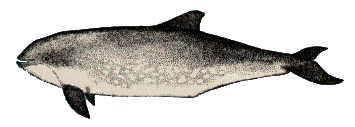
Family Phocoenidae ("porpoises")
Genus Phocaena
Species phocaena ("Harbor Porpoise")
Species dioptrica ("Spectacled Porpoise")
Species spinipinnis ("Black Porpoise")
Species sinus ("Cochito")
Genus Neomeris
Species phocaenoides ("Black Finless Porpoise")
Genus Phocaenoides
Species dalli ("Dall's Porpoise")
Species truei ("True's Porpoise")
Genus Neophocaena
Species phocaenoides ("Finless Porpoise")
Suborder Archaeoceti
A convenient taxonomic pigeonhole for all fossil whales.
Genus Ambuloceti
Genus Pakiceti
Order Sirenia
Genus Trichechus
Species manatus ("West Indian Manatee")
Save the Manatee page. Old link! Tell me where they've gone!
Brain of the Florida Manatee, The
Mustelidae
Genus Enhydra
Species lutra ("Sea Otter")
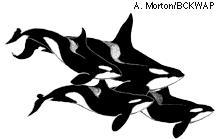
FICTION